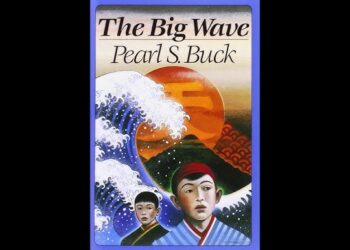Table of Contents
ToggleIntroduction
The Cocktail Party By T. S. Eliot Summary And Themes The Cocktail Party, a play by T. S. Eliot, first performed in 1949, is a complex exploration of human relationships, communication, and the nature of reality. Set within the confines of a social gathering, the play delves into the intricacies of personal and social interactions, reflecting Eliot’s profound understanding of human psychology and his critique of post-war society. The play is characterized by its blend of modernist themes, philosophical undertones, and an innovative approach to dramatic structure. This comprehensive summary will provide an analysis of the characters, plot, themes, and critical interpretations of The Cocktail Party,
Summary of The Cocktail Party
Setting and Context
The Cocktail Party is set in the 1940s, primarily in the living room of a well-to-do couple, Edward and Lavinia Chamberlayne. The social milieu of post-war London serves as a backdrop for the unfolding drama, reflecting the disillusionment and existential crises of the time. The play’s structure combines elements of traditional and modern theatre, allowing for an exploration of both personal and societal themes.

Main Characters
- Edward Chamberlayne: A confused and self-doubting man who is struggling to navigate his personal relationships and responsibilities.
- Lavinia Chamberlayne: Edward’s wife, who is trying to maintain her social status while dealing with her husband’s emotional turmoil.
- The Uninvited Guest: A mysterious figure who disrupts the cocktail party, prompting the characters to confront their inner conflicts.
- Sir Henry Harcourt-Reilly: A psychiatrist who plays a pivotal role in guiding Edward and helping him understand his emotional struggles.
- Celia Coplestone: A friend of the Chamberlaynes, who is in love with Edward and adds to the complexity of the relationships in the play.
- The Man in the Middle: A character representing the voice of reason and pragmatism amidst the social chaos.
READ MORE
Plot Summary
Act 1: The Cocktail Party Begins
The play opens with Edward and Lavinia Chamberlayne preparing for a cocktail party at their home. As guests arrive, the atmosphere is lively yet superficial, reflecting the norms of post-war British society. Conversations are filled with small talk and social niceties, masking deeper issues beneath the surface. Edward appears detached and disillusioned, struggling to engage in the social interactions expected of him.
Amidst the festivities, it becomes evident that Edward is experiencing a personal crisis. His marriage with Lavinia is strained, and his interactions with guests highlight his emotional disconnection. An uninvited guest arrives, creating tension and disrupting the carefully curated social facade. This mysterious figure represents the intrusion of reality into the artificiality of the cocktail party.
Act 2: Confrontation and Revelation
In the second act, the focus shifts to the psychological dimensions of the characters’ relationships. Sir Henry Harcourt-Reilly, a psychiatrist, engages Edward in a conversation that unveils the deeper layers of his discontent. The dialogue becomes increasingly introspective, as Edward grapples with his sense of self and the expectations placed upon him by society.
The arrival of the uninvited guest prompts the characters to confront their inner demons and unresolved issues. The atmosphere becomes charged with tension as the characters’ vulnerabilities are exposed. Lavinia’s desire for social acceptance clashes with Edward’s need for authenticity, leading to a series of confrontations that reveal the complexities of their relationship.
Act 3: Resolution and Acceptance
In the final act, the play reaches a climax as Edward confronts his fears and insecurities. The uninvited guest, who serves as a catalyst for change, encourages Edward to embrace his true self and take responsibility for his actions. The relationships among the characters undergo significant transformations, as they grapple with the realities of their lives and the choices they must make.
Ultimately, the play concludes with a sense of acceptance and renewal. Edward and Lavinia begin to confront their issues more honestly, recognizing the importance of genuine communication and emotional connection. The cocktail party, which initially served as a facade, becomes a space for transformation and understanding.
Themes in The Cocktail Party
1. Communication and Miscommunication
One of the central themes of The Cocktail Party is the complexity of communication. Eliot explores the ways in which characters engage in superficial conversations, often avoiding deeper truths. The play highlights the disconnect between what is said and what is meant, emphasizing the challenges of authentic communication in social settings.
2. Identity and Self-Discovery
The Cocktail Party By T. S. Eliot Summary And Themes The theme of identity is intricately woven into the narrative as characters grapple with their sense of self. Edward’s journey reflects the struggle to define one’s identity amidst societal expectations. The play delves into the complexities of self-discovery, encouraging characters to confront their true desires and fears.
3. Social Facade and Reality
Eliot critiques the social conventions of post-war society, revealing the artificiality of social interactions. The cocktail party serves as a microcosm of societal norms, where appearances are prioritized over genuine connections. The intrusion of the uninvited guest symbolizes the disruption of this facade, prompting characters to confront their realities.The Cocktail Party By T. S. Eliot Summary And Themes
4. Existentialism and Human Relationships
The play reflects existential themes, particularly the search for meaning and connection in a fragmented world. Characters grapple with feelings of isolation and disconnection, emphasizing the importance of relationships in navigating the complexities of existence. Eliot’s portrayal of human relationships highlights the inherent struggles and triumphs of connecting with others.The Cocktail Party By T. S. Eliot Summary And Themes
5. Love and Responsibility
The Cocktail Party By T. S. Eliot Summary And Themes The theme of love is central to the characters’ interactions, as they navigate the complexities of romantic and platonic relationships. The play explores the responsibilities that come with love, emphasizing the need for authenticity and understanding in relationships. Characters must confront their feelings and obligations to one another, ultimately leading to personal growth.
6. Psychological Conflict and Healing
Psychological conflict plays a significant role in the narrative, particularly in Edward’s character arc. The introduction of Sir Henry Harcourt-Reilly serves as a mechanism for exploring the emotional turmoil experienced by the characters. The play emphasizes the importance of acknowledging and addressing psychological struggles as a means of achieving healing and resolution.The Cocktail Party By T. S. Eliot Summary And Themes
7. Time and Change
Eliot explores the passage of time and its impact on relationships and identities. The characters’ experiences reflect the inevitability of change and the need to adapt to shifting circumstances. The play captures the tension between the desire for stability and the reality of impermanence, encouraging characters to embrace change as part of their journey.The Cocktail Party By T. S. Eliot Summary And Themes
Character Analysis
Edward Chamberlayne
The Cocktail Party By T. S. Eliot Summary And Themes Edward serves as the central character, embodying the existential dilemmas faced by individuals in post-war society. His internal struggles reflect the complexities of identity and the pressures of societal expectations. Edward’s journey of self-discovery is marked by moments of vulnerability and introspection, ultimately leading him to confront his fears and embrace authenticity.The Cocktail Party By T. S. Eliot Summary And Themes
Lavinia Chamberlayne
The Cocktail Party By T. S. Eliot Summary And Themes Lavinia represents the societal pressures placed on women in the context of marriage and social status. Her desire for acceptance and her struggles with Edward highlight the challenges faced by individuals in maintaining personal identities within societal constraints. Lavinia’s character undergoes significant development as she grapples with her own insecurities and the realities of her relationship with Edward.
Sir Henry Harcourt-Reilly
Sir Henry serves as a guide for Edward, facilitating his exploration of psychological conflict and self-discovery. His character embodies the theme of healing, as he encourages Edward to confront his emotions and responsibilities. Sir Henry’s pragmatic approach contrasts with the emotional turmoil of the other characters, providing a grounding presence within the play.The Cocktail Party By T. S. Eliot Summary And Themes
The Uninvited Guest
The Cocktail Party By T. S. Eliot Summary And Themes The uninvited guest symbolizes the intrusion of reality into the artificiality of the cocktail party. This character serves as a catalyst for change, prompting the other characters to confront their inner conflicts and unresolved issues. The uninvited guest’s presence challenges the social norms of the gathering, highlighting the disparity between appearances and truth.
Celia Coplestone
The Cocktail Party By T. S. Eliot Summary And Themes Celia adds complexity to the relationships within the play, representing unrequited love and the challenges of navigating emotional connections. Her feelings for Edward reflect the theme of love and responsibility, as she grapples with her desires and the realities of her situation. Celia’s character serves as a foil to Lavinia, highlighting different perspectives on love and social status.
The Man in the Middle
This character represents the voice of reason amidst the chaos of social interactions. The Man in the Middle offers insights and perspectives that challenge the superficiality of the cocktail party, encouraging characters to engage in more meaningful conversations. His presence underscores the importance of authenticity in relationships.The Cocktail Party By T. S. Eliot Summary And Themes

Conclusion
The Cocktail Party By T. S. Eliot Summary And Themes The Cocktail Party is a nuanced exploration of human relationships, communication, and the search for identity within the complexities of post-war society. T. S. Eliot’s masterful blend of modernist themes and character-driven narratives invites readers to reflect on the nature of social interactions and the importance of authenticity in navigating the human experience. The play’s rich characterizations and philosophical undertones contribute to its lasting significance in the landscape of modern theatre.
(FAQ)
Q1: What is the main theme of The Cocktail Party?
The Cocktail Party By T. S. Eliot Summary And Themes The main themes of The Cocktail Party include communication and miscommunication, identity and self-discovery, social facade and reality, existentialism and human relationships, love and responsibility, psychological conflict and healing, and the impact of time and change.
Q2: Who are the main characters in the play?
The main characters include Edward Chamberlayne, Lavinia Chamberlayne, Sir Henry Harcourt-Reilly, the uninvited guest, Celia Coplestone, and the Man in the Middle. Each character represents different aspects of society and explores the complexities of human relationships.The Cocktail Party By T. S. Eliot Summary And Themes
Q3: How does the play address the theme of communication?
The Cocktail Party By T. S. Eliot Summary And Themes The play explores the challenges of authentic communication in social settings, highlighting the disconnect between what is said and what is meant. Characters engage in superficial conversations, often avoiding deeper truths, which reflects the complexities of human relationships.
Q4: What role does the uninvited guest play in the narrative?
The uninvited guest serves as a catalyst for change, prompting the characters to confront their inner conflicts and unresolved issues. This character symbolizes the intrusion of reality into the artificiality of the cocktail party, challenging the social norms of the gathering.The Cocktail Party By T. S. Eliot Summary And Themes
Q5: How does Edward’s character evolve throughout the play?
Edward undergoes significant transformation as he grapples with his identity and responsibilities. His journey of self-discovery involves confronting his fears and insecurities, ultimately leading to a greater sense of authenticity and acceptance.The Cocktail Party By T. S. Eliot Summary And Themes
Q6: What is the significance of Sir Henry Harcourt-Reilly in the play?
Sir Henry serves as a guide for Edward, facilitating his exploration of psychological conflict and self-discovery. His pragmatic approach contrasts with the emotional turmoil of the other characters, providing a grounding presence within the play.The Cocktail Party By T. S. Eliot Summary And Themes
Q7: How does the play reflect post-war society?
The Cocktail Party critiques the social conventions of post-war society, revealing the superficiality of social interactions and the pressures placed on individuals to conform. The characters’ struggles with identity and communication reflect the broader existential dilemmas of the time.The Cocktail Party By T. S. Eliot Summary And Themes
Q8: What is the ending of the play?
The play concludes with a sense of acceptance and renewal, as Edward and Lavinia begin to confront their issues more honestly. The cocktail party, which initially served as a facade, becomes a space for transformation and understanding.The Cocktail Party By T. S. Eliot Summary And Themes
Q9: Why is The Cocktail Party considered significant in modern theatre?
The Cocktail Party is significant for its exploration of complex themes related to identity, communication, and human relationships. Eliot’s innovative approach to dramatic structure and character development has made the play a lasting classic in the canon of modern theatre.The Cocktail Party By T. S. Eliot Summary And Themes
READ MORE

















